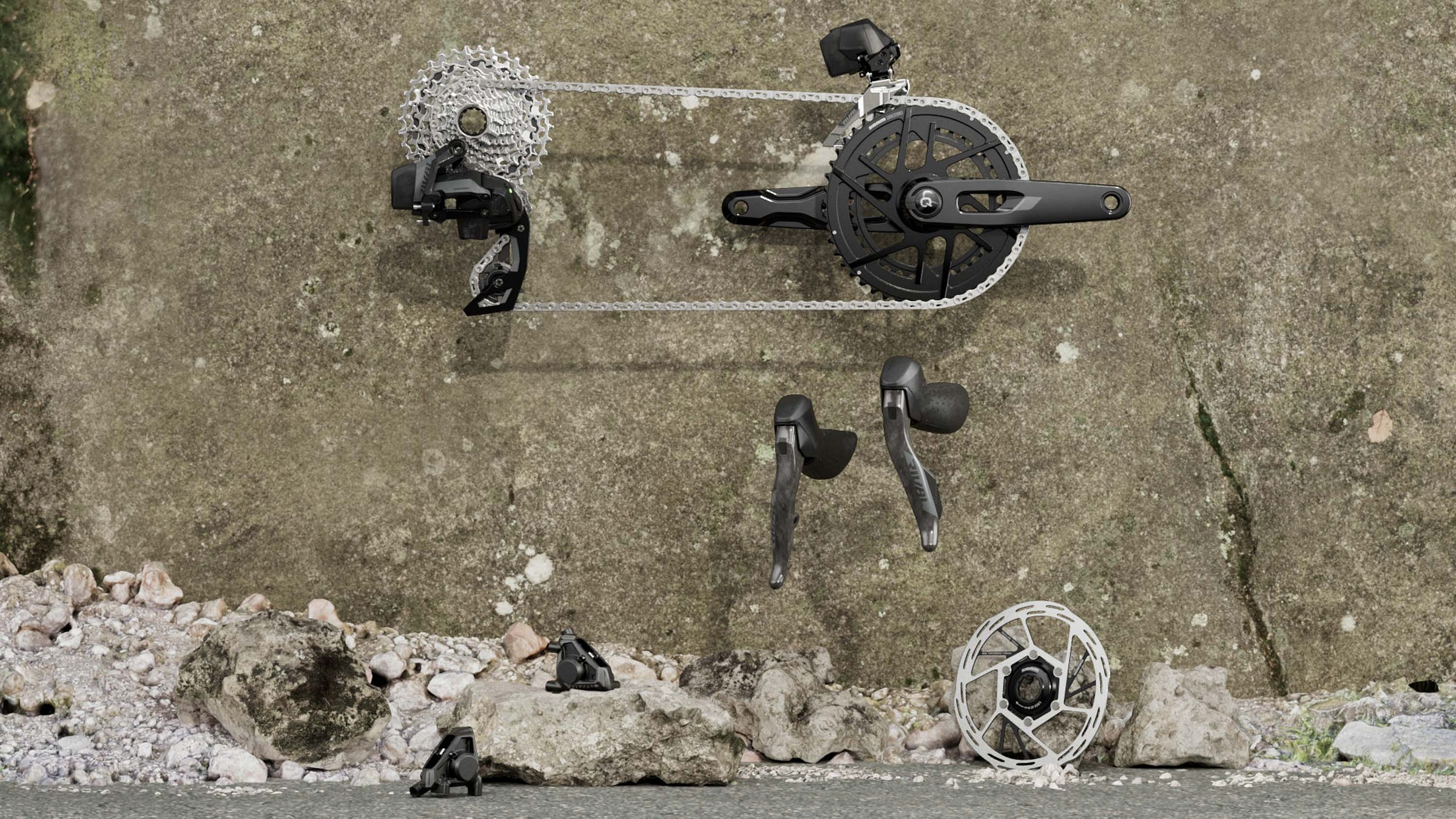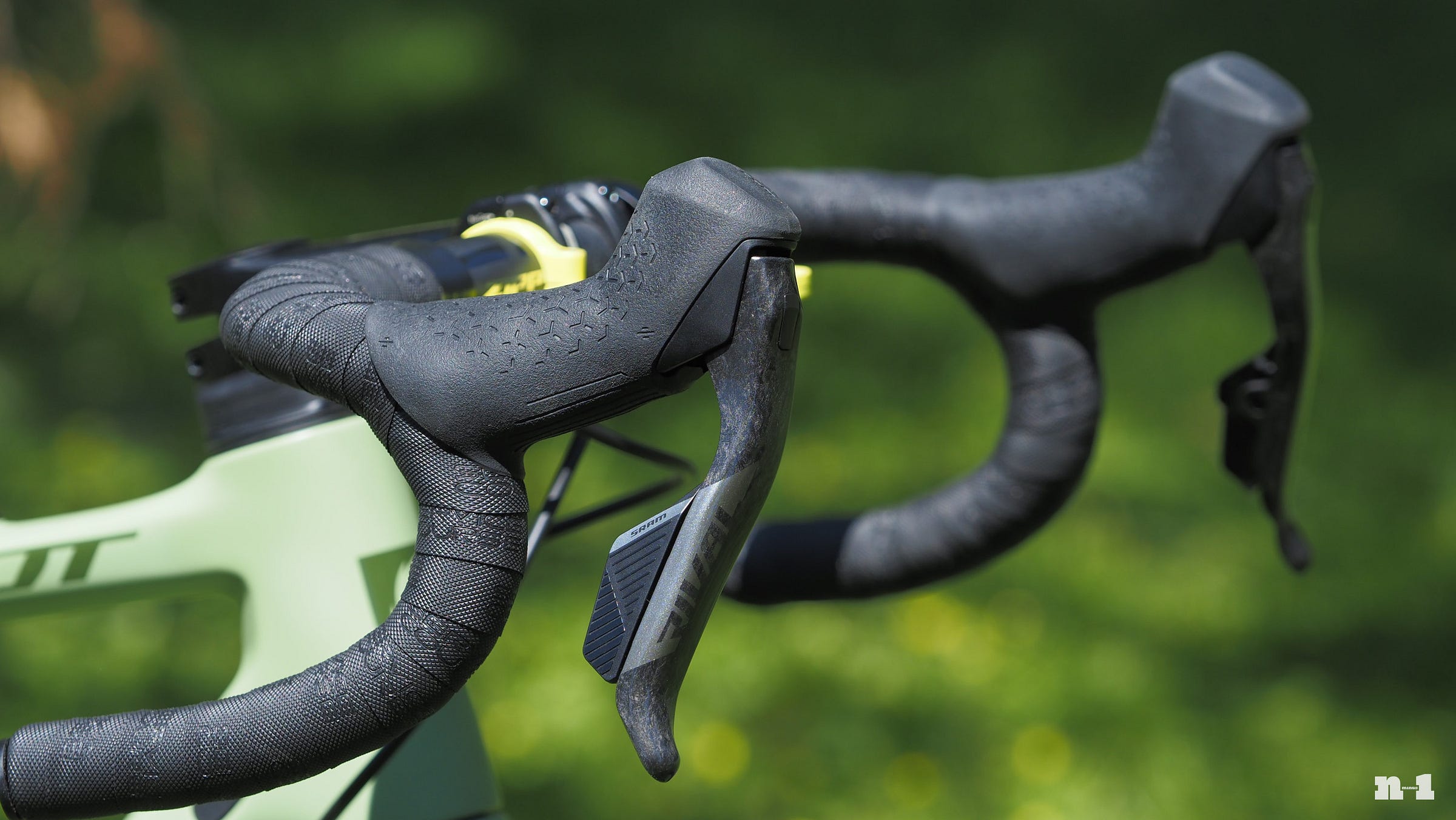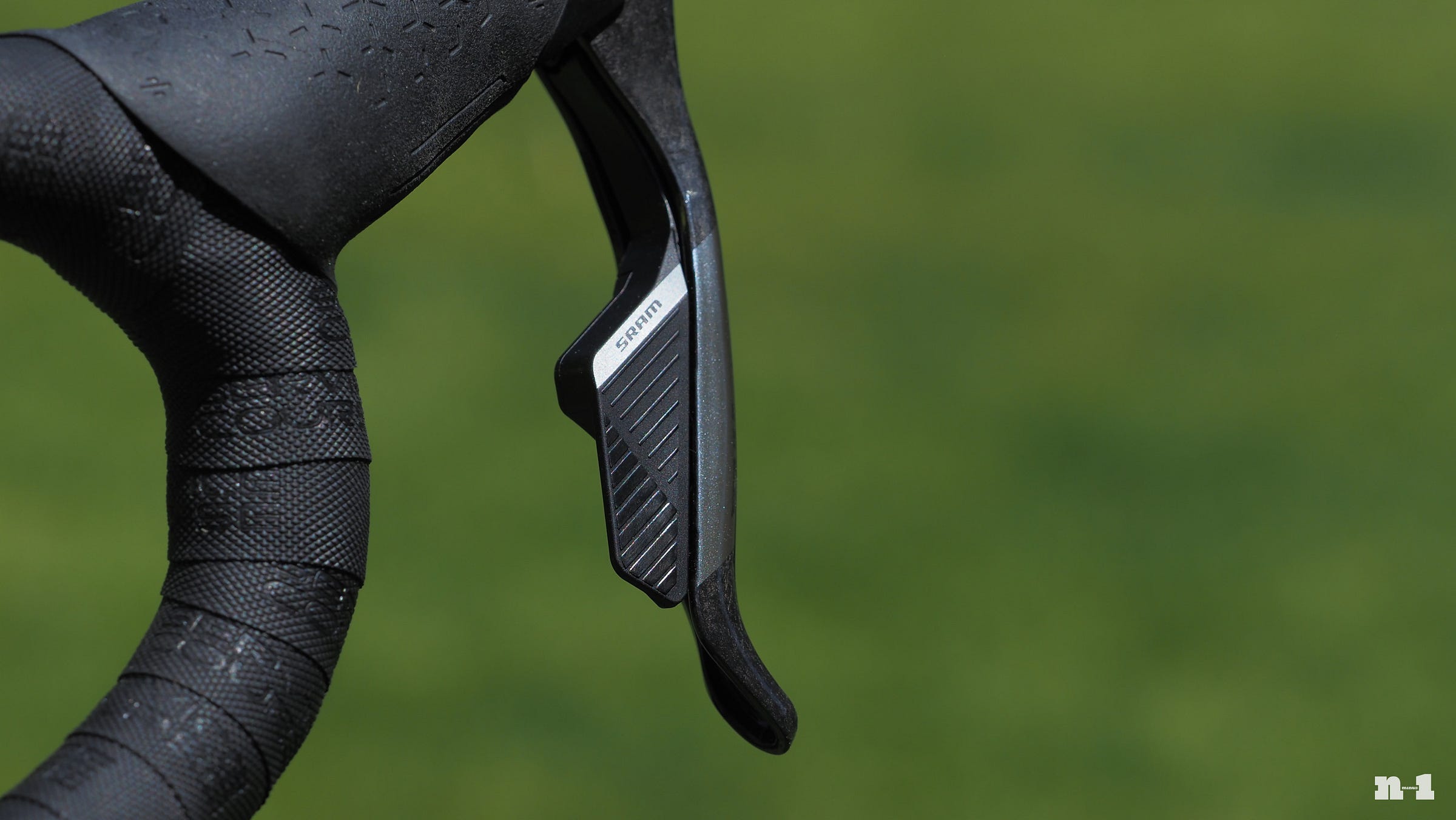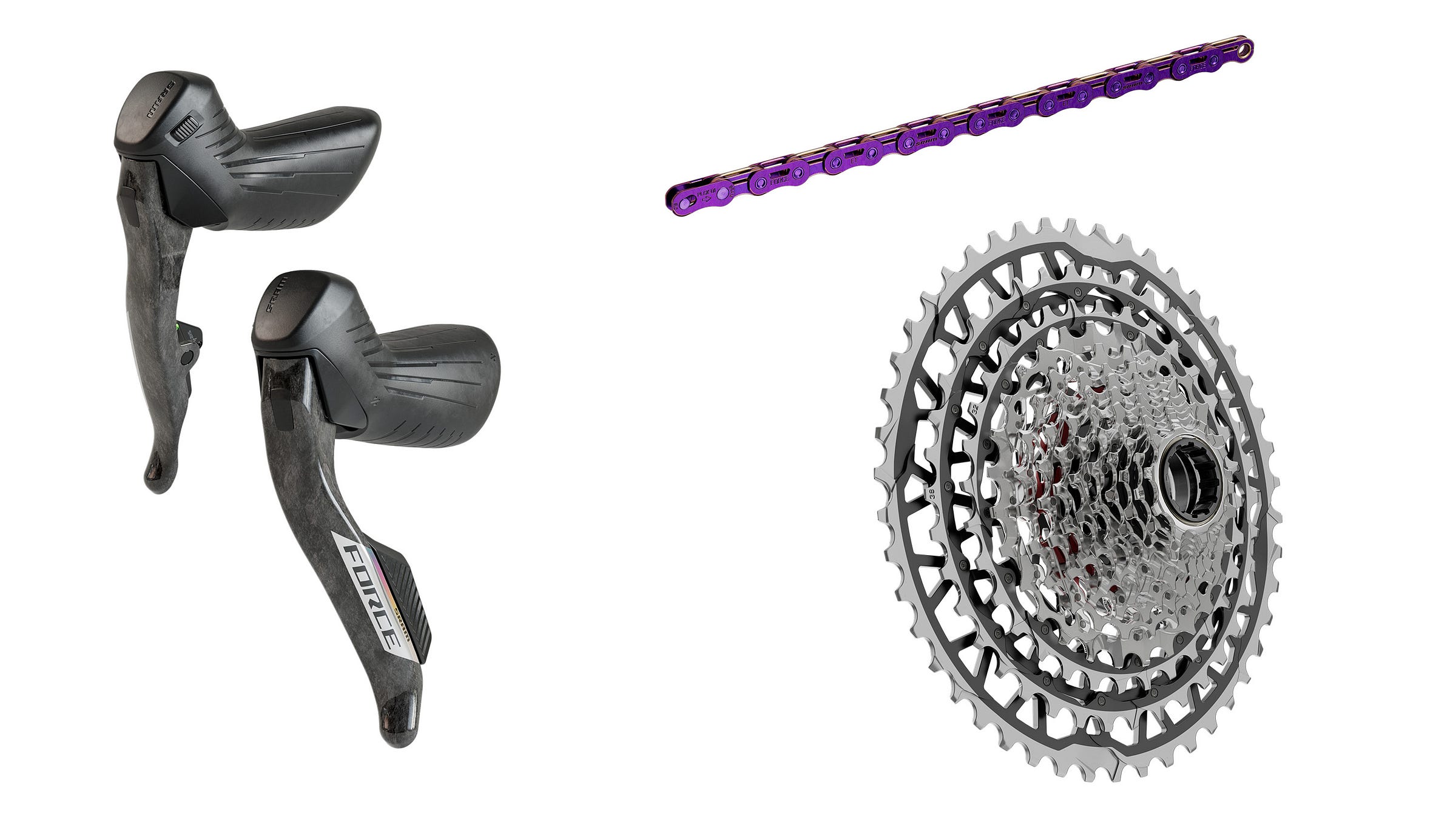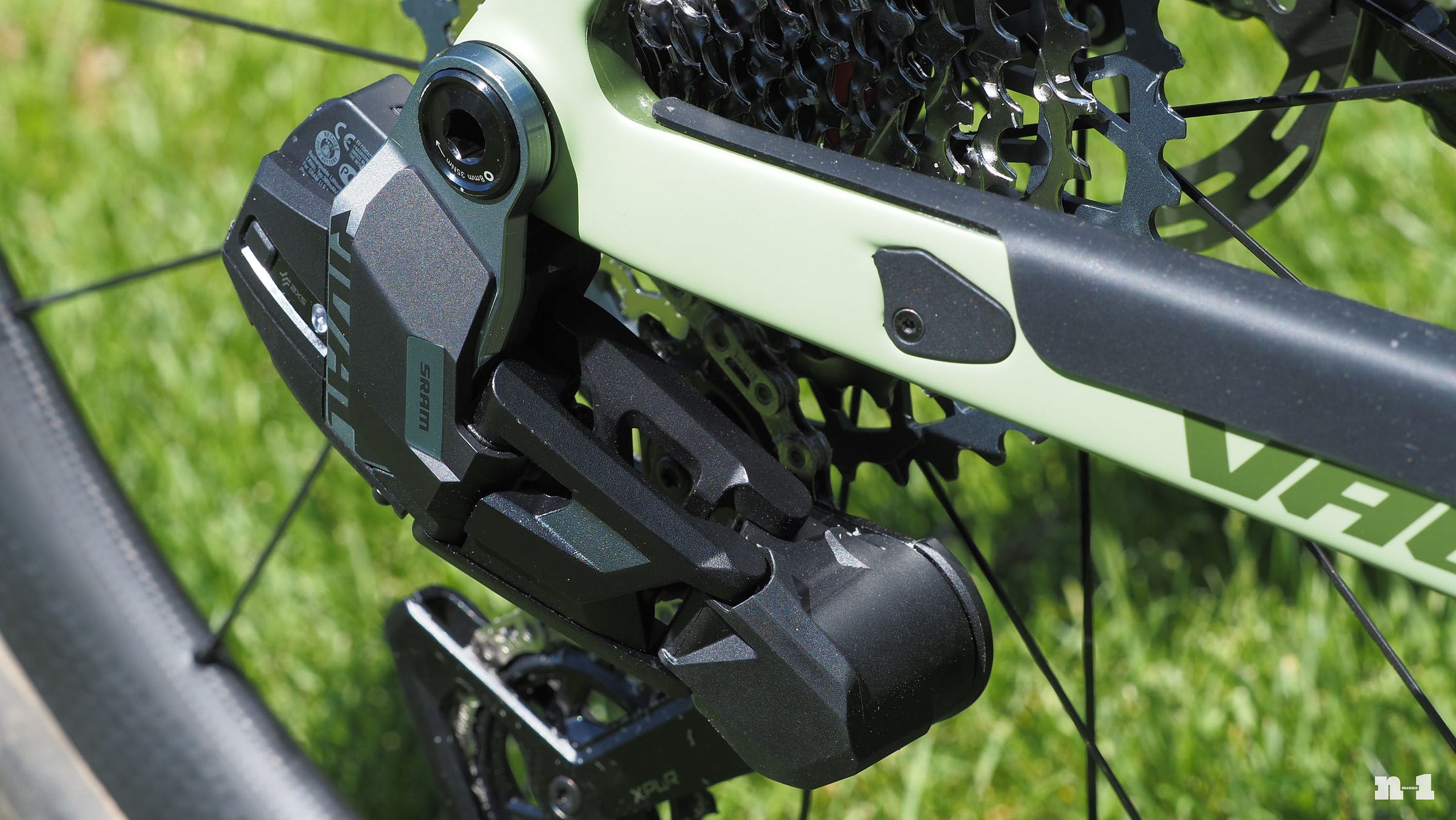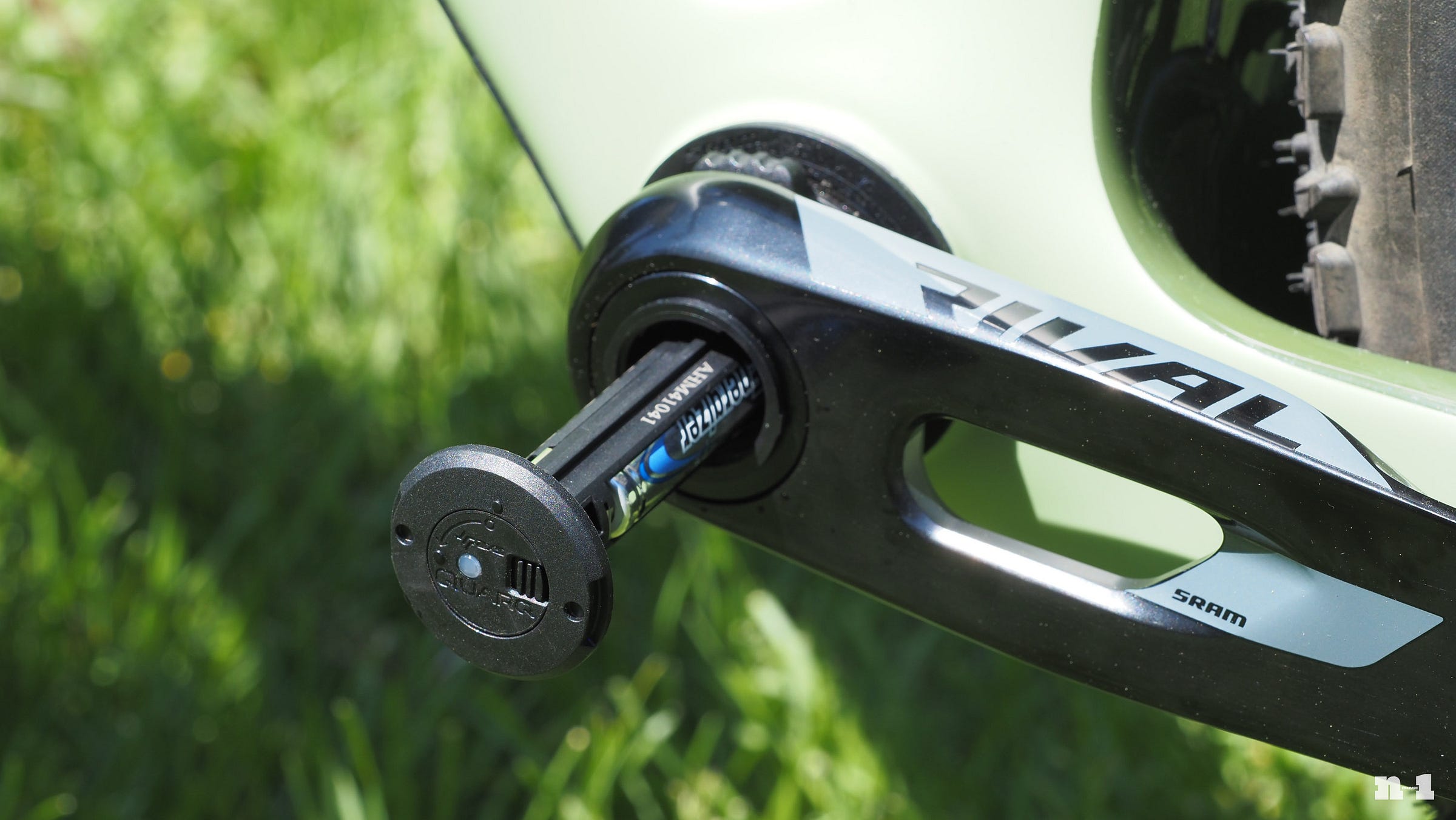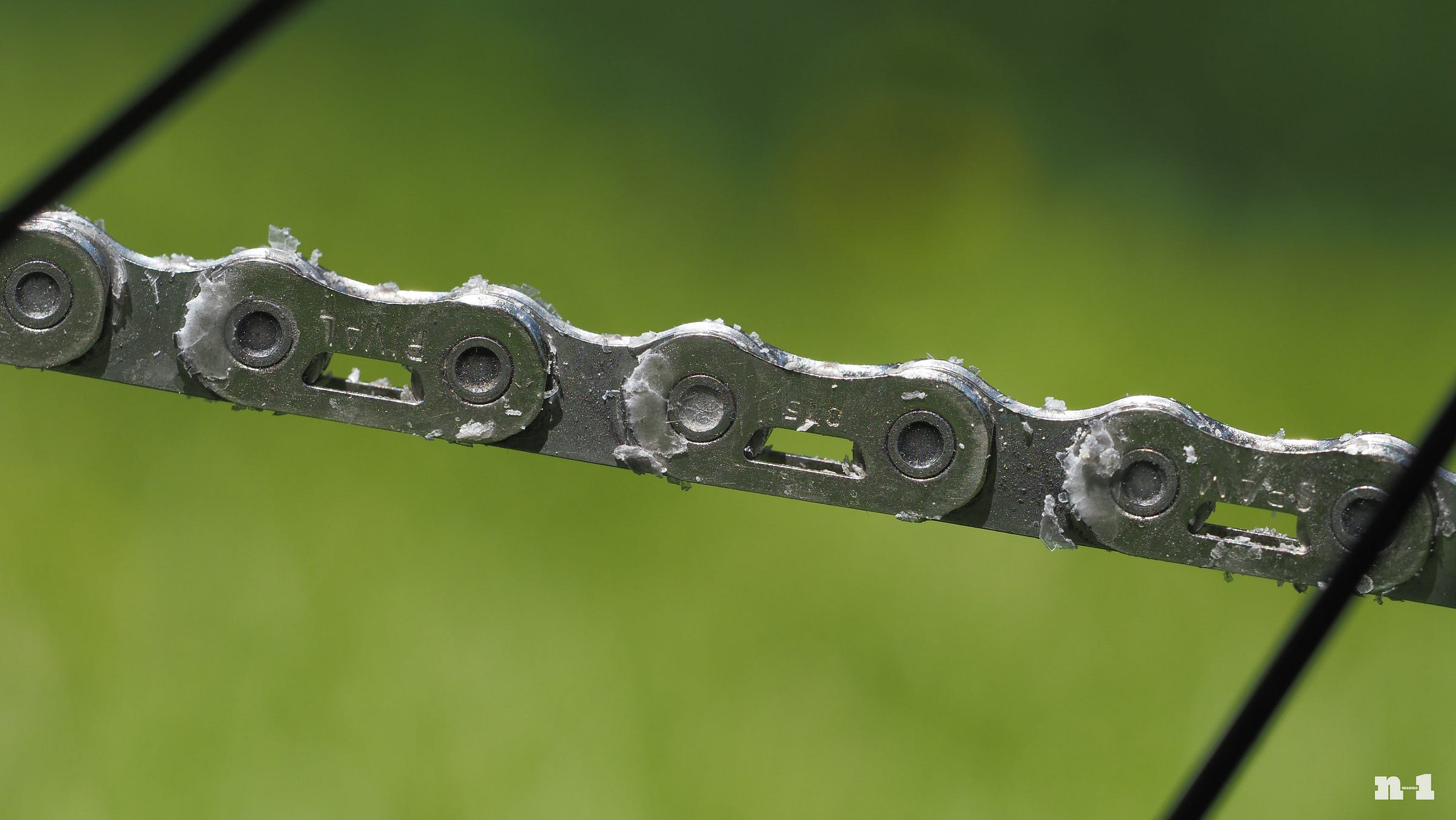2026 SRAM Rival XPLR groupset review: Trickle-down exemplified
13-speed, a wider range, updated lever shapes, and lower weight – but no bonus buttons.
SRAM has today announced a wide range of sweeping changes to its Force and Rival drop-bar wireless electronic groupsets – and I do mean sweeping.
By and large, most of the changes were expected, with both Force and Rival inheriting nearly all of the key upgrades introduced on the Red flagship last year. The new levers offer the same ergonomic and braking improvements, the gravel-focused XLPR variants move to a 1x13-speed format, and road setups stick to a 2x12-speed configuration. Weights are significantly lower across the board, too, and there are more mix-and-match variations than ever so seemingly anyone can put together a groupset to suit their particular wants and needs.
This review will focus more keenly on the bread-and-butter Rival XPLR version, but I’ll provide an overview of the updates to all of the Force road, Force gravel, Rival road, and Rival gravel components, too – all of which should be available on both complete bikes and aftermarket by the time you read this.
Caught Red-handed
Force and Rival have always essentially been just less expensive, heavier, and subtly de-contented versions of the company’s flagship Red groupset, and SRAM certainly isn’t straying from that trend with this latest generation.
The most tangible update is the new lever design, which is shared between road and gravel versions of Force and Rival with subtle differences. Internal friction has been dramatically reduced thanks to the new horizontal “push” orientation for the brake master cylinder in place of the old vertical “pull” one, offering the same big improvements in braking performance as with the most recent Red redesign.
Further helping things along on that front are the reshaped lever blades – made of “long fiber reinforced thermoplastic” for both Force and Rival – which are less likely to pinch your fingers when pulling on the brakes, and with a pivot location that generates more leverage when braking from the hoods. Overall, the lever action is also just snappier with a more refined feel in general that’s more akin to what Shimano has historically offered.
From an ergonomic standpoint, reorienting the hydraulic guts of the 2026 Force and Rival levers allows for a substantially slimmed-down shape that creates more space for your fingers to wrap around the bottom of the hoods, as well as a slightly longer (by about 5 mm) and flatter platform up top for your palms. The new shape feels more natural in your hands, and there are more options for a comfortable grip. Hood textures have been updated, too, with more subtly built-in markings to help users properly position the levers for tilt and yaw.
There are changes in terms of shifting mechanics as well, with both Force and Rival sporting longer paddles for easier access from the hoods or drops. Force levers get the so-called “bonus buttons” on the inboard side of the peaks like Red, and with a more pronounced pattern that should make them easier to find. Rival levers unfortunately do without, but the Force and Rival levers are compatible with up to eight wireless Blip remote shifters so there are still plenty of options for multi-position shifting. As before, both operate on CR2032 coin-cell batteries that are accessed through a quarter-turn hatch on the underside of the lever body, and with the same two-year estimated run time before replacements are needed.
The matching brake calipers again borrow heavily from Red, with similar aluminum forgings, but with much less aggressive machining and without the fancy see-through windows. The new Force bits get SRAM’s quick-connect Bleeding Edge hydraulic ports for easier bleeds, while Rival makes do with the legacy threaded connections.
Brake pads are thankfully carried over so no need to panic for anyone with an existing stockpile. The Paceline rotors are unchanged in terms of the actual brake track, but updated aluminum carriers shed 20 g from previous versions.
XPLR goes to 13
The biggest changes are reserved for the Force XPLR and Rival XPLR gravel variants, both of which move to the 1x13-speed format first introduced with SRAM Red XPLR this past August. The extra sprocket is added to the low end of the cassettes, which now feature a more useful 10-46T spread instead of the previous 10-44T one while still retaining similarly small gaps in the middle.

Both cassettes use SRAM’s circumferentially pinned construction boost stiffness while also allowing much of the middle of the sprockets to be cut way to save weight, and both are designed to fit on XDR splined freehub bodies. Rival cassettes are constructed entirely from stamped steel sprockets, while Force cassettes use aluminum for the largest three cogs.
Interestingly – and despite the addition of a 13th sprocket – both cassettes are lighter than the 12-speed ones they’re replacing, though those aluminum sprockets on Force will surely wear faster than steel ones.
Claimed weight on the new Force XPLR XG-1371 cassette is 346 g (27 g lighter than the XG-1271 cassette), while the new Rival XPLR XG-1351 cassette is 383 g (29 g lighter than the XG-1251 cassette).
The new Force XPLR and Rival XPLR rear derailleurs borrow much of their design from SRAM’s latest Transmission mountain bike groupsets. Like Red XPLR, they feature the company’s Full Mount interface, which attaches directly to the dropout of UDH-compatible frames with no separate hanger required. This not only makes for a notably solid connection since the dropout is now sandwiched between two stout aluminum tabs and braced with the thru-axle, and it also simplifies the installation process since the alignment and positioning of the derailleur is now much more standardized and predictable.
As with all SRAM Full Mount rear derailleurs, there are no adjustment screws for limits or chain gap; just trim the chain based on the chainstay length, chainring size, and cassette size using SRAM’s handy setup guide, position the pulley cage into the setup position, pull back on the derailleur body until the chain is tensioned, and lock down the mounting bolt. Aside from maybe a little fine-tuning of the indexing (which is most easily accomplished through the SRAM AXS app), that’s it; you’re all done.
The linkage geometry is adapted from SRAM’s mountain bike derailleurs, too, with a straight parallelogram configuration that’s less prone to bump-induced movement, while down below, the offset pulley cages are connected to mechanical spring-type clutches to manage chain slap.
Neither rear derailleur is designed such that every piece can be serviced and/or replaced, though based on how Transmission mountain bike rear derailleurs are holding up, the new XPLR ones should be awfully tough. That said, SRAM is at least offering a handful of small parts, including the upper mounting assembly, the outer link plate, the sacrificial skidplate, the battery latch, and the cage/damper/pulley assembly.
That substantially burlier construction does come at a cost, though, namely in terms of weight. SRAM says the new Force XPLR rear derailleur tips the scales at 418 g, while Rival XPLR is only a smidgeon heftier at 435 g – gains of 110 g and 108 g over their respective predecessors.
Keep in mind, too, that there’s still the option of a “mullet” drivetrain (using a SRAM AXS-compatible mountain bike cassette and rear derailleur) if you need or want even more range.
Weight-focused upgrades for the road
Updates to the new Force and Rival road groupsets are more focused on shedding grams and increasing refinement.
Both setups are still based on a 12-speed cassette, with the same gearing options as before. For Rival, that means 10-30T or 10-36T cassettes and 46/33T or 48/35T chainrings. Force gets a broader selection that adds 10-28T and 10-33T flavors, plus a 50/37T chainring set.
Cassettes are carried over from before – and weigh the same as a result – with the same construction, with mostly stamped steel sprockets and circumferential pins connecting adjacent sprockets that boost stiffness while still allowing most of the interior to be removed for lower weight. Rival cassettes are all steel, whereas Force cassettes get an aluminum largest sprocket.
Crankset weights have decreased across the board, though, in large part due to their new CNC-machined one-piece double chainrings. According to SRAM, the new Force power meter double crankset is 33 g lighter than before, while the non-power meter version has dropped a whopping 92 g. Rival cranksets are 50 g lighter in either version.
Speaking of power, Force users that want power measurement get their choice between single-sided spindle-based systems or dual-sided spider-based ones, with the latter getting one-piece CNC-machined double chainrings that are separately replaceable, using the same threaded system that was originally introduced with XX SL Transmission.
Rival customers get their own optional power meter, but only SRAM’s simpler spindle-based design for single-sided measurement. That power meter remains mostly unchanged from the existing version, except for the addition of a new tool-free cap to access the AAA lithium battery.
Crankarms are shared between the respective road and gravel versions of Force and Rival. Force once again features molded carbon fiber arms but with a new design that supposedly contributes further to the weight loss, while Rival gets a more unconventional solid forged aluminum arm shape derived from SRAM’s XO mountain bike crankset. Instead of the integrated spider Rival used previously on 2x setups, both Rival and Force now use the same eight-bolt chainring interface shared by other SRAM cranksets across the board, which opens the door for all sorts of 2x, 1x, and aftermarket variations. Arm lengths for both Force and Rival cranksets run from 160-175 mm, and both are offered in both standard and so-called Wide variants depending on the desired chainline.
The new chains get some tweaks, too, both of which are compatible with both 12- and 13-speed cassettes. Rival chains get new cutout outer link plates and a hard chrome surface treatment on the inner links that decrease weight and improve longevity, while the the Force chain gets new cutouts on both the inner and outer links, plus hard chromed inner links and rollers. Much more conspicuous for Force is the availability of a new bright purple-tinted surface treatment that’ll certainly add some flair for the otherwise black-and-silver aesthetic.
Subtle derailleur changes on the road for improved shifting
SRAM continues to make meaningful improvements to its front shifting. Force and Rival derailleurs get narrower cages for more precise chain control, while automatic trim minimizes the chance of chain rub. New setup tools should reduce the chance of user error during installation, too.
Speaking of which, Force and Rival front derailleurs now have only one mounting hole instead of two, which SRAM says is compatible with chainrings up to 50T.
Out back, the updates are mostly cosmetic with updated shapes and finishes. Both Force and Rival still feature a single rear derailleur for all cassette and chainring combinations, and both still feature clutched pulley cages for enhanced chain control on bumpy terrain. Force switches from a hydraulic to a mechanical clutch, though, which SRAM says, “removes complexity and reduces cost of the Force rear derailleur, which was a priority.”
Hitting the gym
Improved ergonomics and added functionality aside, a consistent theme with the revamped Force and Rival groupsets is lower weight. According to SRAM, a new Rival 2x road groupset is 183 lighter than before, while a Rival 2x road groupset saves even more with 213 g of claimed savings. And despite the substantially heftier rear derailleurs, XPLR versions also weigh less than they used to, with a complete Force XPLR groupset boasting a total decrease of 84 g and Rival XPLR dropping 23 g.
Detailed claimed weights and retail prices are as follows (including weight changes vs. the previous Force and Rival iterations):
SRAM Rival AXS 2x w/o power meter: US$1,764 / £1,576 / €1,765 / AU$2,803
SRAM Rival AXS 2x w/ power meter: US$1,929 / £1,721 / €1,925 / AU$3,058
SRAM Rival XPLR w/o power meter: US$1,563 / £1,392 / €1,560 / AU$2,455
SRAM Rival XPLR w/ power meter: UUS$1,743 / £1,552 / €1,740 / AU$2,740
SRAM Force AXS 2x w/o power meter: US$2,432 / £2,168 / €2,423 / AU$3,826
SRAM Force AXS 2x w/ power meter: US$2,842 / £2,528 / €2,823 / AU$4,461
SRAM Force XPLR w/o power meter: US$2,153 / £1,917 / €2,135 / AU$3,375
SRAM Force XPLR w/ power meter: US$2,358 / £2,102 / €2,345 / AU$3,705
SRAM Rival XPLR review
One of the things I really appreciate about electronic drivetrains is how performance is democratized across price points since the most critical guts are shared. In other words, using the same motors, batteries, controllers, and so on should theoretically result in identical shifting performance. That’s actually always been the case with SRAM’s AXS wireless stuff (and Shimano, to be fair), but with these latest changes, those words ring truer than ever. I’ve now spent plenty of time on both Red XPLR and this latest Rival XPLR groupset, and by and large, there’s virtually zero tangible difference between the two.
Just as with Red, the new levers are a revelation. The shape is much more comfortable both in terms of the way your fingers wrap around the body as well as how your palm rests on top, and the more refined shape finally does away with some of the weird exposed edges that I occasionally found on older AXS drop-bar levers. They simply just feel better.
Keep reading with a 7-day free trial
Subscribe to n-1 to keep reading this post and get 7 days of free access to the full post archives.





